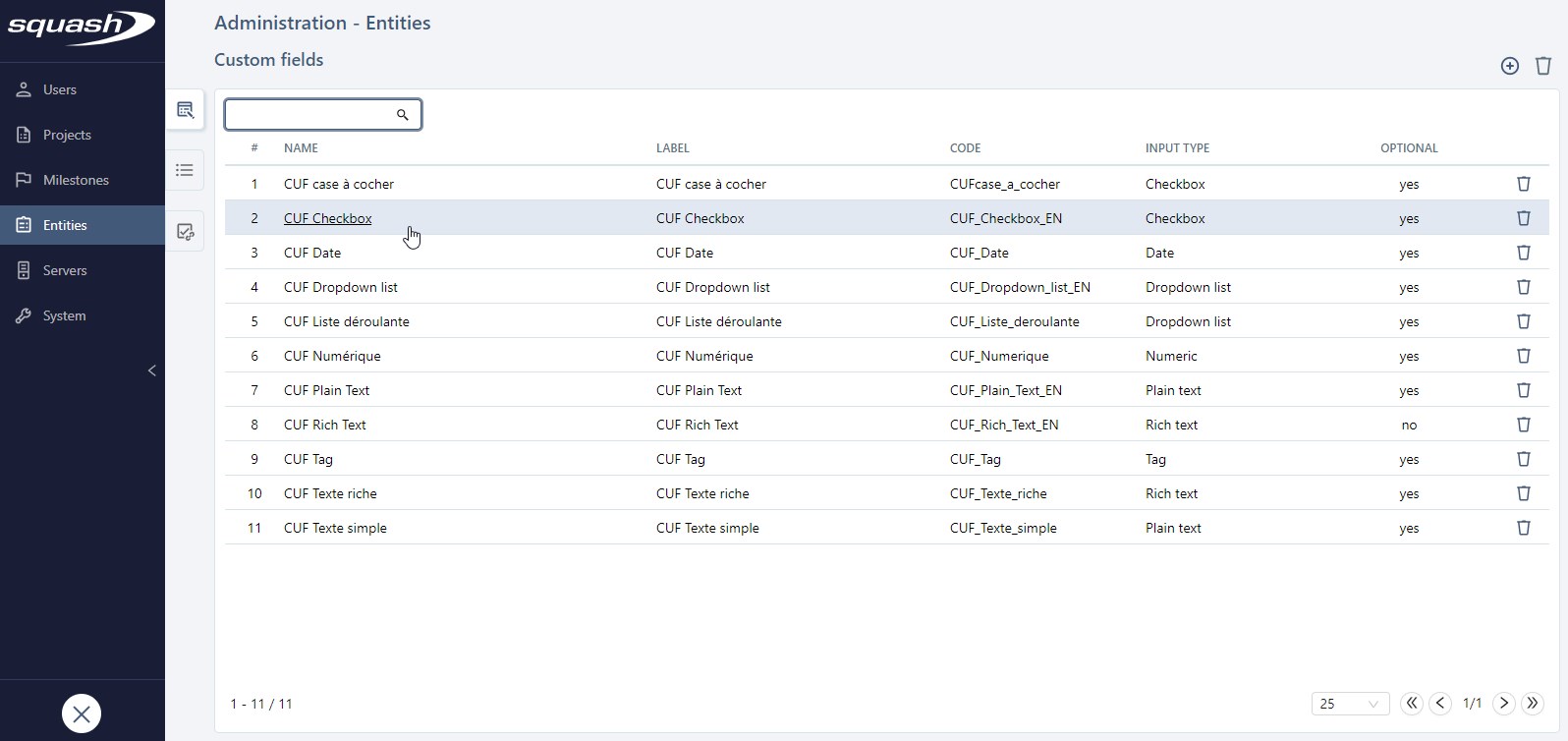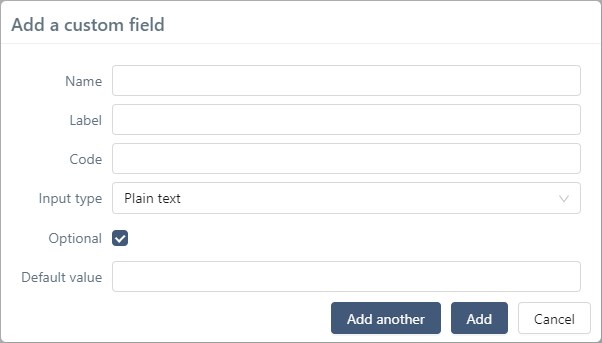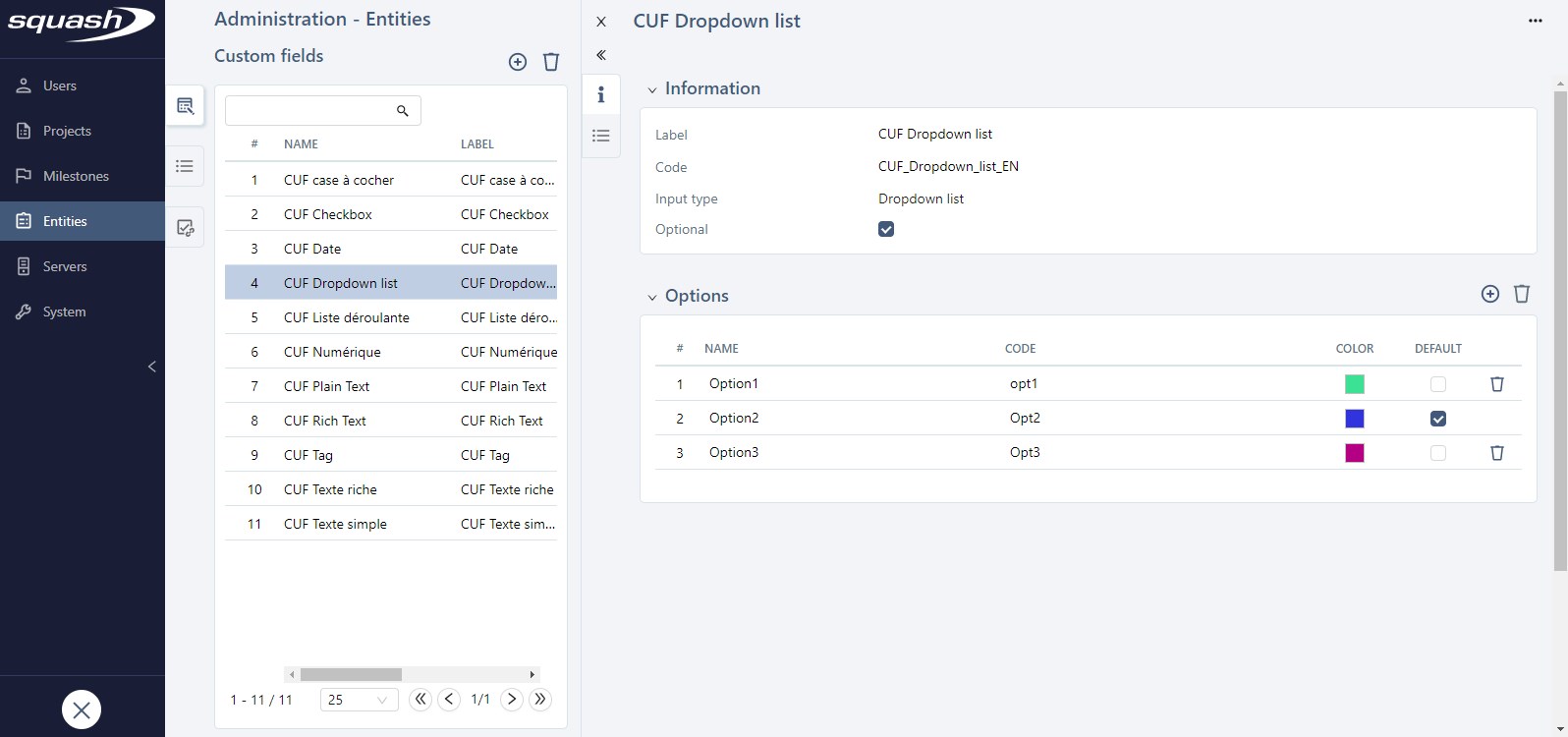Manage Custom Fields
You can manage custom fields from the Administration workspace. For this, in the sub-menu "Entities", click on the anchor  .
.
Custom fields (CUF) are customizable items and units that are added to the "Information" block of a folder, requirement, test case, campaign, iteration, or test suite.
Types of Custom Fields
There are 7 types of custom fields (CUF):
| Custom Field Type | Description |
|---|---|
| Simple Text | This field can contain a maximum of 255 characters |
| Rich Text | This field can contain formatted text, images, links, and tables |
| Numerical | This field can contain whole, negative, and decimal numbers |
| Date | You can select the date from a calendar |
| Checkbox | ---- |
| Drop-down List | Drop-down list with multiple customizable options |
| Tag | This field can contain multiple tags |
For example, a custom field can have as a value the version number of your application, the browser to use for executing the test, additional information, etc.
Add, Modify, and Delete Custom Fields
From the table to manage custom fields, you can add ![]() or delete
or delete  one or multiple custom fields.
one or multiple custom fields.

When creating a custom field, you must complete:
- the "Name" field
The name appears when you associate a project or an entity. - the "Label" field
The label appears on the consultation page of the entity you have chosen. - the "Code" field (can only contain letters, numbers, and underscores)
This code must be unique. It will be used during data imports/exports. - the Type of custom field. (by default, "Simple text" is selected.)
Every custom field:
- can be mandatory or optional (except for checkboxes). The "Optional" option is checked by default during the creation.
- can contain a default value. This default value appears at the creation of the object.
If the custom field is mandatory, you must enter a default value.

For "Drop-down list" custom fields, you can assign a color to every option of the list. These colors will be used when you create charts with these custom fields in the Reporting workspace.
By clicking on a custom field's row number (#) or its name, the custom field's consultation page appears for you to edit if needed.

Focus
Once created, custom fields must be associated with a project and an entity (Requirements, Test cases, Test steps, Campaigns, Executions, etc.)
To associate custom fields with a project, please visit the page Configure a project - Customize a project